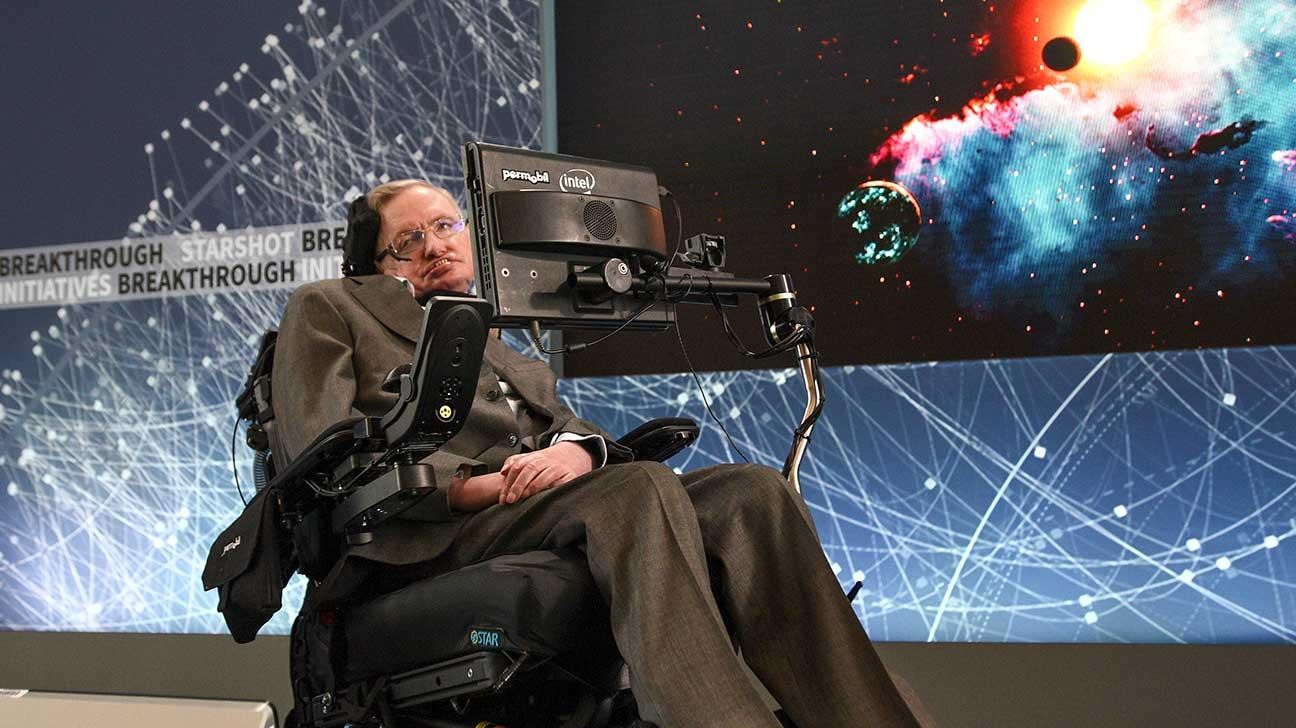ALS Day: The Curious Case of Stephen Hawking
On World ALS Day 2018, we want to talk about Stephen Hawking, the ultimate example of resilience and a man who inspired so many, the world over
On World ALS Day 2018, we join the ALS Awareness movement because we believe we all need some inspiration and hope when it comes to facing the obstacles we find in our paths. Whether it’s ALS, MS or any other neurodegenerative disease, the more people are aware, the more incentive there will be for people to investigate these diseases. According to the International Alliance of ALS/MND Associations, ALS affects an estimated 350,000 individuals around the globe. The disease can impact anyone, anywhere, regardless of age, ethnicity, or socioeconomic background.
Today, we decided to provide some insight into how Stephen Hawking inspired so many people to be resilient and the latest scientific advances related to the disease. Unlike the Curious Case of Benjamin Button, the curious case of Stephen Hawking is a real story that gives a voice to many people around the world who need to be heard.
“However difficult life may seem, there is always something you can do and succeed at. It matters that you don’t just give up.” Stephen Hawking

What is Amyotrophic Lateral Sclerosis (ALS)?
ALS is a degenerative, progressive, rare neurological disease, and is the most common form of Motor Neurone Disease (DNM). It affects the nerve cells in the brain and spinal cord that cause the muscles in the body to move. There is currently no cure. Slightly more men than women suffer from it, and if you want to understand the underlying causes, it’s no easy task. In fact, the exact causes of ALS are not yet clear. The vast majority of sufferers have a “sporadic” version that can affect anyone, although up to 10% of cases are inherited. One clue to understanding survival rates is in our DNA. According to Rothstein, anywhere from five to ten percent of ALS cases are “familial,” meaning that a defective gene or genes get passed down through families. Other cases are considered “sporadic” – either a gene mutation that occurred in a patient with no family history, or an unknown cause. Genes may determine who gets ALS – and who survives the longest – thelatter of which Stephen Hawking was the ultimate example!

Stephen Hawking’s inspiring outlook on living with ALS
“The realization that I had an incurable disease that was likely to kill me in a few years was a bit of a shock.” Stephen Hawking
Stephen William Hawking was a healthy baby, born in Oxford, England, on 9th January 1942 – on the exact 300-year anniversary of the death of Galileo Galilei. He died last March, aged 76. He was diagnosed with Amyotrophic Lateral Sclerosis (ALS) at the age of 21 (in 1963). ALS is a rapidly progressing disease that gradually paralyzes people, so they lose the ability to walk, talk, eat, swallow, and eventually breathe. The doctors gave him a life expectancy of 2 years, during which his physical abilities continued to decline.
Within a year, he was using a cane, and his speech was almost unintelligible. He slowly lost the ability to write and to speak. Determined to make the most of this time left, he married Jane Wilde and they had three children. Despite all the obstacles he faced, he would live more than 50 years and have a shining career.
To give you a glimpse of some of his accomplishments:
- He was a pioneer in unravelling the secrets of black holes and transformed the way scientists regard the universe with the development of his theory of spacetime.
- He had an infectious enthusiasm for his work and a passion for making it understandable to all.
- Despite his many physical limitations, he was an extraordinary communicator of science. He published the books “A Brief History of Time” and “The Universe in a Nutshell” which both became best sellers.

While his contributions deepened our understanding of the universe, he also contributed to a wide array of extremely important contemporary debates and issues — things such as artificial intelligence, the building of a fair society and problems thrown up by disruptive technologies. His impact on the public understanding of science is almost beyond measure.
However, researchers have said Hawking’s exceptional longevity remains a mystery, though some have noted that the progression of the disease varies from patient to patient and could be governed by genetics.
Experts struggle to find anyone with the disease who has lived longer than Hawking, even after he spent decades paralyzed in a wheelchair. In 1985, a severe case of pneumonia left him breathing through a tube, forcing him to communicate through an electronic voice synthesizer. It was this machine that gave him his distinctive robotic monotone. But that didn’t stop him making important scientific contributions, appearing on television and receiving several prestigious awards.

The early years of Stephen Hawking’s career (and life) were portrayed in the movie “The Theory of Everything”, which was released in 2014. The movie shows the man’s will to live and to overcome all the limitations medicine predicted for him. Eddie Redmayne, who played Hawking in the film, won an Academy Award for best actor for his portrayal of the scientist. Stephen Hawking was also very well known for his sense of humour. His character was portrayed in “The Simpsons” and he even took part in TV shows like “The Big Bang Theory” and “Little Britain”, among others.
Whether it’s genetics, modern technology, or some other reason, what might be the most remarkable thing about Hawking’s disease is not how long he survived, but how brilliant his mind continued to be, in spite of the disease.
The Ice Bucket Challenge: fighting to keep up momentum
For a long time, Stephen Hawking was the only famous sufferer of ALS, but the disease became well known in 2014, when Pete Frates, a former Boston College basketball player who had lived with ALS since 2012, began the Ice Bucket Challenge. The challenge went viral and went a long way in raising awareness of the disease, as well as helping to amass donations to the Commonwealth Association.

After the Ice Bucket Challenge, there was an incredible boost in public awareness of the disease that led to a tsunami of research projects. These extra resources were very welcome because there is still no cure, no drug to beat ALS, even though according to the organization most people are diagnosed between the ages of 40 and 70, and on average, patients only live between two and five years from the onset of symptoms.
Pam Shaw, a professor of neurology at England’s University of Sheffield, told USA Today that she wasn’t sure why some people live longer than others after they are diagnosed with the disease. And the case of Stephen Hawking still remains a “strange case” among the scientific community.
“The older you are, the quicker the disease course tends to be, but we don’t really have a handle on why some people survive for longer periods than others. I wish we did,” Pam Shaw
Movements like the Ice Bucket Challenge are extremely important in raising awareness, and it’s important we don’t lose the momentum created by them. Stephen Hawking’s 55-year battle with ALS was inspiring, but most people with the disease don’t live more than 5 years and don’t receive the medical care he did.
An overview of the latest in the fight against ALS
On average, 5,000 people are diagnosed with ALS each year, but no one knows what causes the disease. Scientists have been studying many different types of factors that may be linked to ALS, from genetics and environmental exposure, to diet or injury.
Philip Van Damme’s team is part of Ludo Van Den Bosch’s lab in the VIB-KU Leuven Centre for Brain & Disease Research and he claims that:
“We may not have found the ultimate cure, but we’re definitely getting ahead.”
But what advances have been made so far?
1 – Researchers know that patients’ SOD1 gene contains an error that harms their neurons. That’s where abnormal protein clots develop that probably play a major role in the development of the disease. A specific type of gene therapy may slow down the production of these proteins and have an immediate effect on the error that triggers the entire disease. This type of gene therapy has already shown promising results for a different motor neuron disease, so researchers believe it may also help ALS patients, but the studies are still in progress. This treatment only applies to patients with genetic ALS, but the new insights will also help advance research into sporadic ALS.
2 – A clinical study was recently published about Edaravone, a drug that has a positive effect on a patient’s decline, including those who don’t have the genetic form of the disease. Up to now, this positive effect has only been described for a limited group of people who met specific conditions: they were selected at an early stage of the disease and doctors expected them to deteriorate quickly. Whether the drug will be registered in Europe is still unclear, but the American Food and Drug Administration (FDA) has recently approved Edaravone in the USA.
3 – We’re currently learning more about the glial cells that provide support for neurons and surround them. Recent findings indicate that these cells probably contribute to neurodegeneration.
4 – Scientists around the world are also looking for biomarkers to measure the progress of the disease more quickly and more accurately. These pieces of the puzzle are still missing. You can closely monitor the size of the tumour in cancer patients and check virus concentrations in the blood of HIV patients, but you cannot predict where ALS will start, and the progression of the disease is different in every patient. It’s very important that we keep looking for more accurate measuring methods so that when we start clinical studies we can be more specific.
5 – In its early stages, ALS is difficult to diagnose, leading the average time between the first symptoms and diagnosis to be as long as a year. To make a quicker diagnosis possible, we need better tests for ALS. Researchers have discovered that the lumbar fluid of ALS patients contains a higher concentration of the structural proteins in the cytoskeleton known as neurofilaments, perhaps because these are released by affected motor neurons. Therefore, a lumbar puncture may soon make an accurate diagnosis possible.
In the future, scientists may find that it’s the combination of many factors that causes ALS. Until last year, there was only one FDA-approved drug for ALS and it only prolonged survival by a few months. In May 2017, the FDA approved the first new drug in more than 20 years to treat the condition. But there is still no cure, no drug to beat ALS. Not yet.
Sources
- International Alliance of ALS/MND Associations, What is ALS/MND?
- ALS Association, Genetics
- USA Today, How did Stephen Hawking live so long with ALS?
- KU Leuven News, World ALS Day 2017: the fight against an unseen killer
- Science Daily, VIB – Flanders Interuniversity Institute for Biotechnology,A Diagnostic test for ALS

 USA
USA